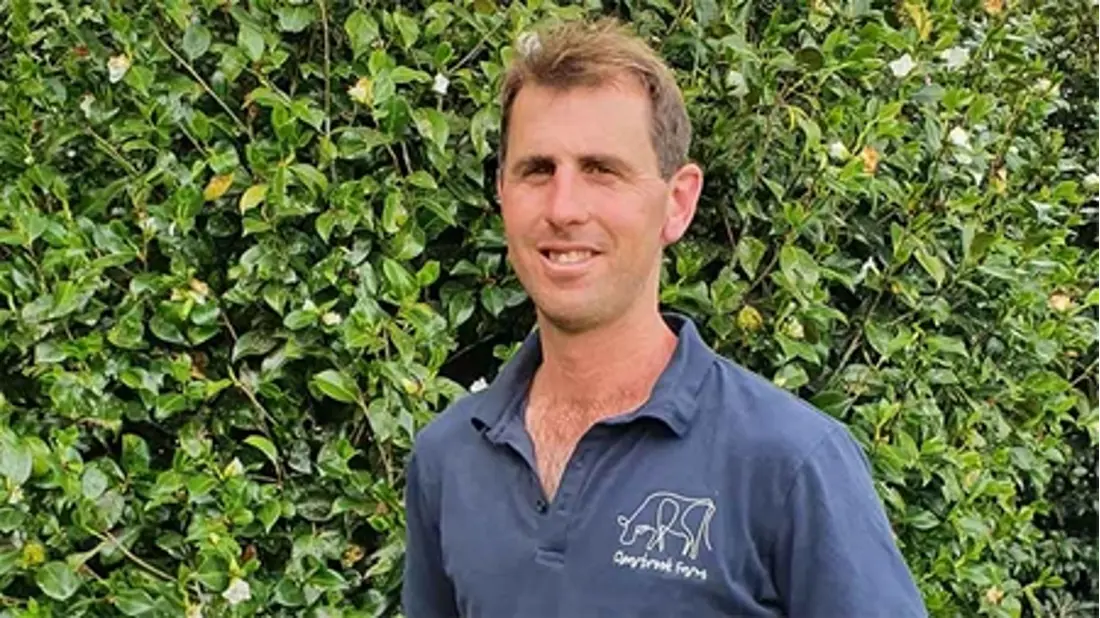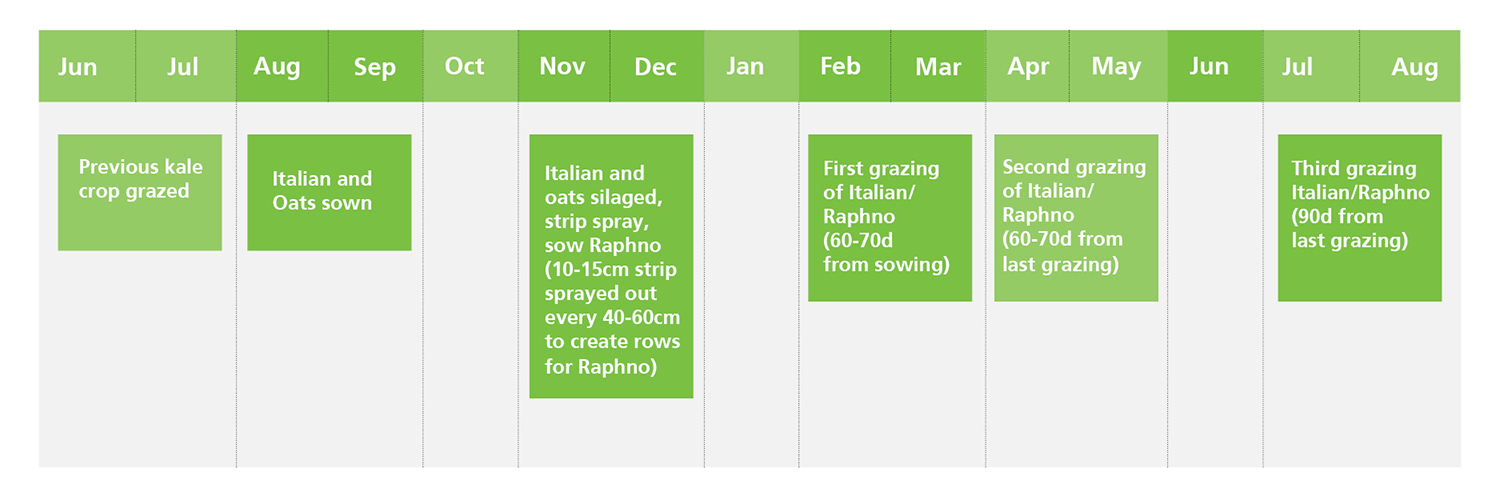Forages for Reduced Nitrate Leaching, Campbell and Martine Tait (Canterbury)
5 min read
5 min read
Based in Lowcliffe, Ashburton, the Tait Family Trust oversees an intergenerational dairy business that began milking in 2011. The business prioritises high performance in areas like people, environment, animals, and profit. A major challenge they face is nitrogen (N) loss due to light soils and certain irrigation methods. However, the Taits have adopted strategies to combat this, including adjusting their fertiliser N use and managing winter crops efficiently. Additionally, they're keen on innovation, currently exploring 'Relay cropping', which involves alternating crops within a paddock. They're also collaborating with other farms on a project to reduce environmental footprints while upholding business profitability.

Campbell Tait.
Tait Family Trust is an intergenerational family-owned dairy business based in Lowcliffe, Ashburton. The home farm (275ha) was previously operated as a sheep farm with some cropping and beef. The property was converted in 2010/11 and started milking in the 2011/12 season. A 123ha support block, 1km east of the dairy, was purchased in 2014 providing dairy support to the business and allowing livestock numbers to increase.
The business aims to operate at a high performance level, particularly in the areas of people, environment, animals, and profit. Operating a self-contained system is important for risk management, and everyone is encouraged to be involved in the community.
Challenges for the farm include light soils that are prone to nitrogen loss. There is an area of gun irrigation on the support block that contributes to significant N loss through high drainage – plans are in place to replace the gun systems with pivots.
The Taits use a range of methods to apply N fertiliser, including solid and liquid forms. Because of the range in application methods, keeping track of the use in different areas is complex. Campbell manages this himself by breaking the farm into 14 management zones which cover the milking platform and cropping areas. These are kept on a spreadsheet, and applications are recorded as they are made. Use in 2019/20 season averaged 190-200 kg N/ effective ha on the milking platform, and Campbell is looking to drop this slightly in 2020/21. The farm has applied higher levels in the past, and Campbell has found these tips have helped to reduce their use down to their current levels:
As a largely self-contained operation, we are conscious of the environment footprint of every aspect of the dairy business. It is our intention to maintain our self-contained status while improving profitability and reducing N-loss and greenhouse gases.
We know there are large gains to be made through improving irrigation efficiency, lifting herd performance through better in-calf rates and utilising more grass through optimising soil fertility and improved grazing management. We hope our investments in technology and upskilling team members will show us some improvements in these areas. Our team are happy and healthy and our plantings are doing well, and we consider these to be as important as the bottom line.
The Tait’s have winter crops in the same block as the milking platform, as well as on a nearby support block. “We have focused on keeping the crop area away from the lighter soils on the farm, to reduce the N loss impact,” says Campbell. “This takes a higher level of decision making, but is something we can do if we plan well.”
The farm is now using all kale for wintering. While this initially increased their crop area compared to fodder beet, they’ve now been able to reduce the total winter crop area further, to around 45 hectares. This reduction in area has been partly due to an increased focus on getting cows close to target Body Condition Score (BCS) before winter. When cows are close to their target BCS, they can be fed at maintenance levels over winter, reducing total crop demand. They have also increased the pasture area allocated to cows that need to gain condition over winter.
The Tait’s first did within-paddock soil testing four years ago after seeing another farmer get good results from this approach. Individual paddock soil testing had been done already to ensure that other nutrients weren’t holding back pasture production, as Olsen P was below the optimal range in some areas. By moving to within-paddock testing, Phosphorus and Potassium capital applications have now been targeted to get all areas of paddocks within the optimal range.
“After we started talking about nutrients within paddocks, I thought about the patterns of down cows that we had last spring,” says Campbell. “Typically we would have your usual milk fever issues at the fronts of paddocks where K is likely to be high, and cows with low Phosphorus when we were in the backs of paddocks. That’s what made me decide to get smarter around how we apply nutrients within our paddocks.”
Some silage is made on the milking platform, and they have usually taken whole paddocks for silage when they are in a surplus. Campbell is now considering using only the fronts of paddocks to harvest silage. This would allow them to remove some of the potassium build up from the front sections.
Campbell is planning to repeat within paddock soil testing next winter, to assess improvements and plan future fertiliser applications, and targeted silage areas.
Campbell enjoys thinking outside the box and trying new ideas. One that is in the pipeline is using a combination of Italian ryegrass and Raphno, sown in alternating strips within a paddock. Raphno is a brassica that is a hybrid between kale and radish, and can be grazed and regrown multiple times. There are a number of reasons Campbell wants to try this as a winter feed option:
Campbell has access to a contractor’s strip sprayer, and a drill to plant Raphno in the sprayed strips.
After a normal crop of kale has been grazed for winter, they are planning to sow a combination of oats and Italian ryegrass at the same time as a usual catch crop. After it is harvested for silage, the Italian ryegrass would remain, strips would be sprayed out in the Italian ryegrass, and the Raphno sown.
There would then be three grazings of the Italian ryegrass/Raphno combination in late summer, autumn, and late winter, before the paddock was moved to the next crop.

Challenges and risks that are being considered are:
Campbell says that they are always looking for new ideas. “This is one that we can try at a relatively small scale first and see how well it works for us.”
The Taits are one of 50 farms who are partnering with the DairyNZ funded Selwyn/Hinds – Meeting a Sustainable Future Project. They are exploring the options for reducing their farm’s environmental footprint (water quality and greenhouse gases) while maintaining profitability and considering the strategic objectives of their business. As part of the project, these 50 farms are sharing a range of ideas, learnings, case studies and analyses as the project progresses.
Now’s the perfect time to check in, plan, and set up for a strong season. We’ve pulled together smart tips and tools to help you stay ahead all winter long.
Whether you prefer to read, listen, or download handy guides, we’ve got you covered with trusted tools to support your journey every step of the way.